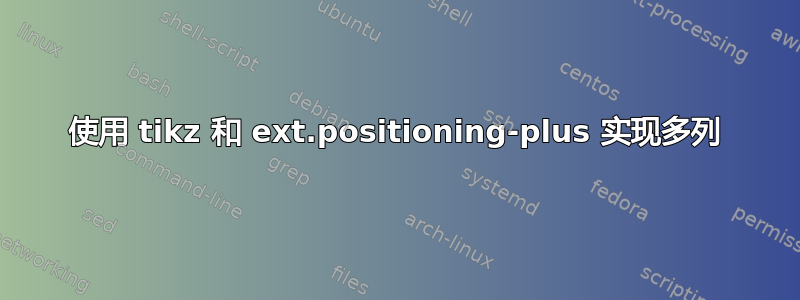
ext.positioning-plus 扩展没有正确定位图表。
它偏向右边。我正在使用 resizebox 调整图表大小。
我可以修改它吗?
https://www.overleaf.com/8352567847sbpxqdyywggz#809cb8
在 main.tex 中
\begin{figure}
\centering
\resizebox{\linewidth}{!}{%
\input{fig/ff}
}
\caption{Caption}
\label{fig:enter-label}
\end{figure}
在 fig/ff.tex 中 https://tex.stackexchange.com/a/142618/36296
\usetikzlibrary{
arrows.meta, % for arrow tips
backgrounds, % for background layer
ext.paths.ortho, % for ortho paths
ext.positioning-plus, % for
ext.node-families.shapes.geometric, % loads ext.node-families and
% shapes.geometric, % for ellipse
calc % for ($$)
}
\tikzset{
basic box/.style={
shape=rectangle, rounded corners, align=center, draw=#1, fill=#1!25},
header node/.style={
node family/width=header nodes,
font=\strut\Large\ttfamily,
text depth=+.3ex, fill=white, draw},
header/.style={%
inner ysep=+1.5em,
append after command={
\pgfextra{\let\TikZlastnode\tikzlastnode}
node [header node] (header-\TikZlastnode) at (\TikZlastnode.north) {#1}
% the next node contains both \tikzlastnode and its header
% this is needed so that h- can be used to connect lines
node [span=(\TikZlastnode)(header-\TikZlastnode)]
at (fit bounding box) (h-\TikZlastnode) {}
}
},
fat blue line/.style={ultra thick, blue}
}
\begin{tikzpicture}[
node distance=1cm and 1.2cm,
thick,
nodes={align=center},
>={Latex[scale=.9]},
ortho/install shortcuts]
\path[node family/width=loop]
node[shape=ellipse, fill=red] (imp-sol) {ellipsoid box}
node[fill=yellow, below=of imp-sol] (rec-box) {
rectangular box, and very wiiiiiiiiiiiiiiide \\ 2nd line};
\node at ($(imp-sol.west|-imp-sol.south)!.5!(rec-box.north west)$) [
shift=(left:.5*x_node_dist)] (for-1) {formula 1};
\node at ($(imp-sol.east|-imp-sol.south)!.5!(rec-box.north east)$) [
shift=(right:.5*x_node_dist)] (for-2) {formula 2};
\scoped[on background layer]
\node[
basic box=blue, header=DMFT loop,
fit=(for-1)(for-2)(imp-sol)(rec-box)] (dmft-l) {};
\path[very thick, blue, -|] (rec-box) edge[->] (for-1) edge[<-] (for-2)
(imp-sol) edge[->] (for-2) edge[<-] (for-1);
\node[
basic box=green, header=DMFT prelude,
east above=of dmft-l] (dmft-p) {
Math and text math and text math and text \\
math and text math and text math and text};
\node[
basic box=green, header=$\rho$ update,
north left=of dmft-l, shift=(down:y_node_dist)] (rho) {
Much more text much more text \\ much more text much more text};
\node[basic box=blue, header=DFT part, anchor=north] at (dmft-p.north-|rho)
(dft) {So much text so much text so much text \\
I think I need \texttt{tikz-lipsum} \\ or something like that.};
\node [basic box=green, below=+0pt of (dft.north east)(dmft-p.north west)]
(upd) {update\\$math$};
\coordinate (dmft-p-sse) at ($(dmft-p.south)!.5!(dmft-p.south east)$)
coordinate (dmft-l-ssw) at ({$(rho.south)!.5!(dmft-l.south)$}-|dmft-l.south west)
coordinate (dmft-p-ssw) at ({$(upd.south)!.5!(dmft-p.south)$}-|dmft-p.south west);
\path[fat blue line, ->]
(rho) edge[<-, dashed, |-] (dmft-l-ssw)
(dmft-p-ssw) edge[<-, -*] coordinate[pos=.15] (@s)
coordinate[pos=.85] (@e) (dft)
{[every edge/.append style=dashed, |-] (@s) edge[<-] (upd)
(@e) edge (upd)}
(h-rho) edge[dashed] (dft)
(dmft-p-sse) edge[|*] (dmft-l);
\end{tikzpicture}



